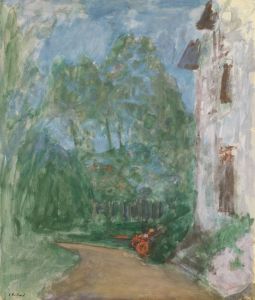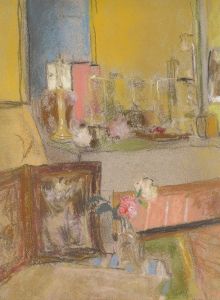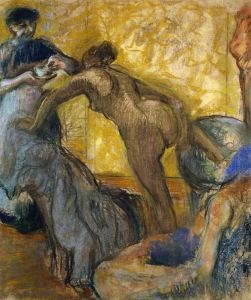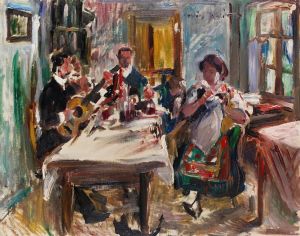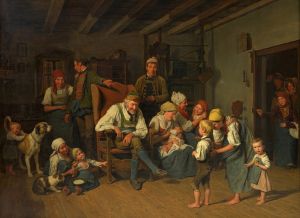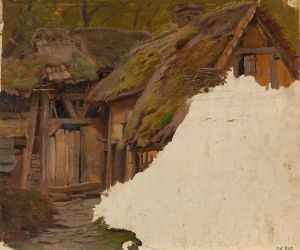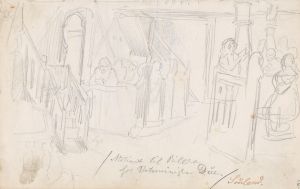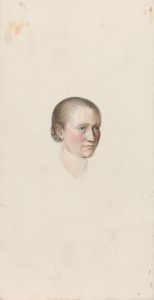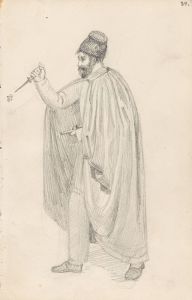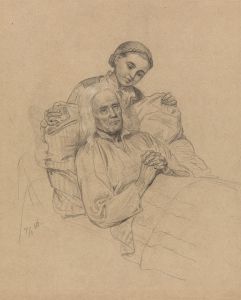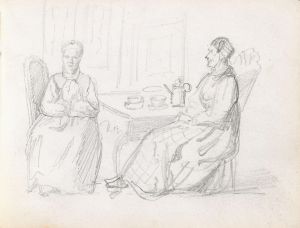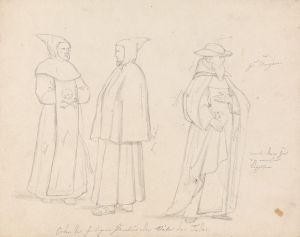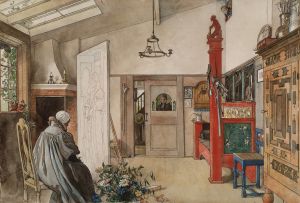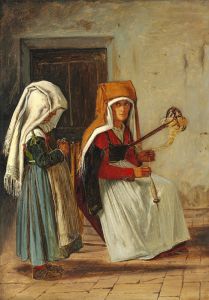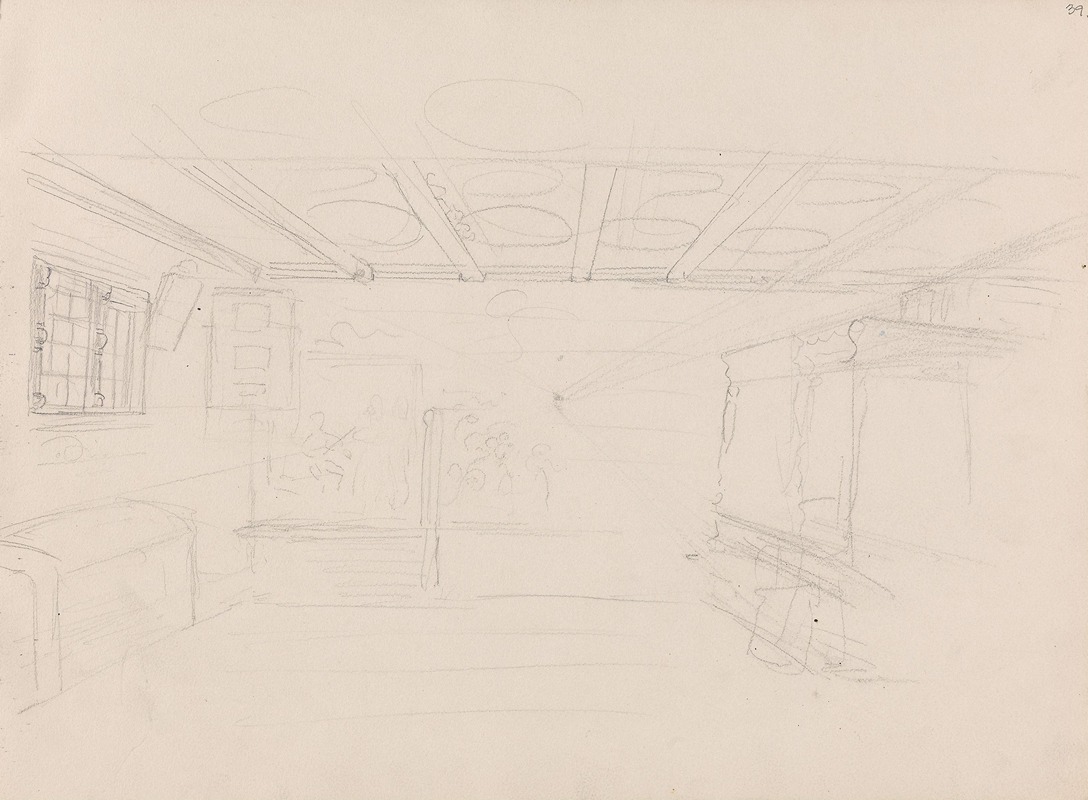
Interior
A hand-painted replica of Adolph Tidemand’s masterpiece Interior, meticulously crafted by professional artists to capture the true essence of the original. Each piece is created with museum-quality canvas and rare mineral pigments, carefully painted by experienced artists with delicate brushstrokes and rich, layered colors to perfectly recreate the texture of the original artwork. Unlike machine-printed reproductions, this hand-painted version brings the painting to life, infused with the artist’s emotions and skill in every stroke. Whether for personal collection or home decoration, it instantly elevates the artistic atmosphere of any space.
Adolph Tidemand was a prominent Norwegian painter in the 19th century, known for his detailed and culturally rich depictions of Norwegian life and traditions. One of his notable works is "Interior," which exemplifies his focus on capturing the essence of rural Norwegian life. Tidemand's work is often celebrated for its ethnographic accuracy and its ability to convey the spirit of the Norwegian people during a time of national romanticism.
"Interior" is a painting that reflects Tidemand's interest in the everyday life of Norwegian peasants. While specific details about this particular painting are not extensively documented, Tidemand's oeuvre typically includes scenes of domestic life, traditional costumes, and rustic interiors, which are depicted with a keen eye for detail and a deep respect for the cultural heritage of Norway.
Tidemand was born in 1814 in Mandal, Norway, and he studied art in Copenhagen and later in Düsseldorf, where he became associated with the Düsseldorf school of painting. This school was known for its detailed and realistic style, which Tidemand adopted and adapted to suit his focus on Norwegian subjects. His works often feature a strong narrative element, capturing moments of everyday life that resonate with cultural significance.
Throughout his career, Tidemand traveled extensively across Norway, gathering inspiration and material for his paintings. He was particularly interested in the customs, traditions, and lifestyles of the Norwegian people, which he documented with both artistic skill and anthropological interest. His paintings serve as a visual record of 19th-century Norwegian life, offering insights into the social and cultural fabric of the time.
Tidemand's collaboration with Hans Gude, another prominent Norwegian painter, resulted in some of the most famous works in Norwegian art history, such as "Bridal Procession on the Hardangerfjord." However, Tidemand's solo works, including "Interior," continue to be appreciated for their intimate portrayal of Norwegian culture.
The significance of Tidemand's work lies in its contribution to the national romantic movement in Norway, which sought to foster a sense of national identity and pride through art and literature. By focusing on the lives of ordinary Norwegians, Tidemand's paintings helped to shape a national consciousness that celebrated the unique cultural heritage of Norway.
In summary, while specific information about the painting "Interior" by Adolph Tidemand is limited, it can be understood within the broader context of his work and his dedication to depicting Norwegian life. Tidemand's paintings remain an important part of Norway's cultural history, offering a window into the past and preserving the traditions and stories of a bygone era. His legacy continues to influence Norwegian art and culture, and his works are celebrated for their historical and cultural significance.





